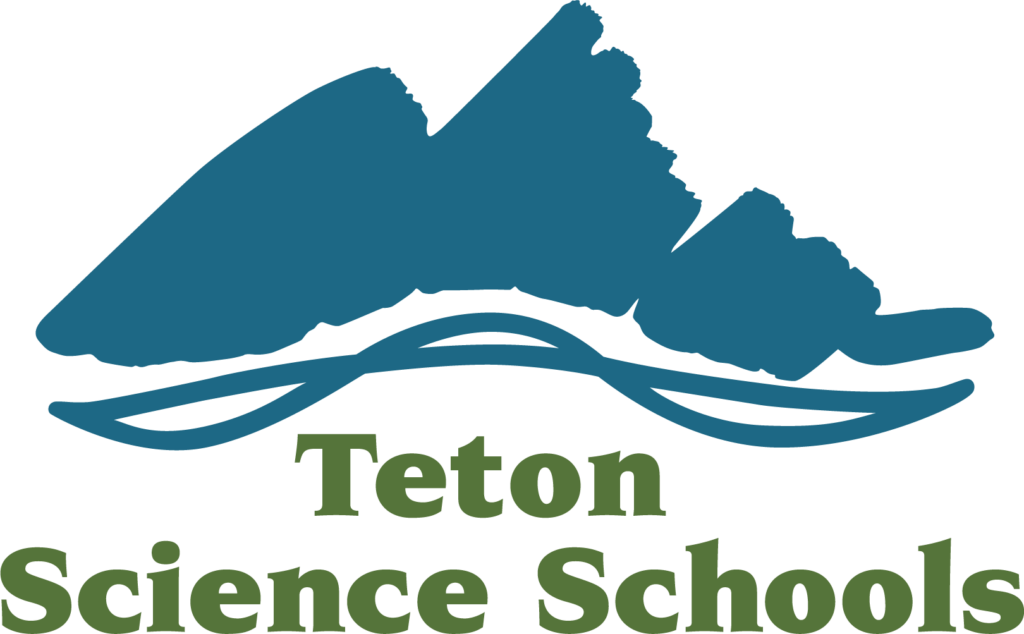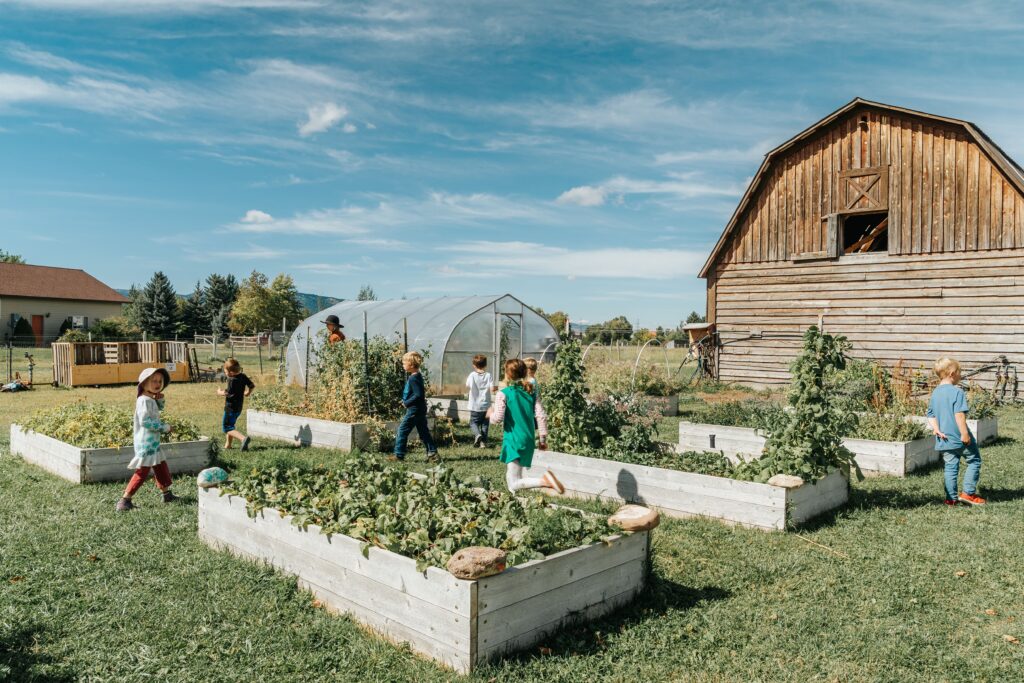At Teton Science Schools, gardening and growing food has long been a part of our place-based curriculum. Mountain Academy students can often be found tending to the vegetable plots during Farm and Garden program on the Teton Valley Campus . On our Jackson Campus, our youngest learners often pick fresh greens from the greenhouse for snacking.
For our students and teachers, our gardens and greenhouses are not only a space for place-based learning, but a sanctuary for play, mindfulness and tasty delights.
It’s not always about planting the plant and watching it grow, either.
In his book, “Last Child in the Woods,” Richard Louv expands upon this idea when he writes, “It’s about turning over the rocks. It’s about getting your hands muddy and your feet wet. It’s about using more of your senses. It’s about being in the world…there’s a special magic to that.”
Right now, it may seem like magic is in short supply — our country, and the world around us, is navigating a challenging public health crisis, students and teachers are navigating distance learning and families are slowly adapting, if at all, to routines in this “new normal.”
But, perhaps the garden — or any place to grow something green — can still provide that bit of magic we all seem to be lacking at the moment. Whether you have access to a few pots on a windowsill, an apartment balcony, or a backyard plot, we thought we’d share a few tips for learning and growing in the garden with kids.
If you’re a novice gardener, check out this article on how to get started in the garden.
Let the Kid Guide

One of the foundational principles of place-based education is all about letting the learner guide the way — and it’s a great way to approach gardening, too! Even as adults, gardening is all about experimenting and learning from your mistakes. “Giving kids a guiding framework and support to garden successfully, then letting them make choices about what they want to grow, can help them gain a sense of independence and responsibility” (source). Like in the classroom, letting kids follow their interests and have agency in the whole process, from planting to harvesting, can result in more engagement and enthusiasm for the final product (like tasting a new vegetable!). Guidance when it comes to planning, watering and harvesting is ok, but we always encourage the kids to do as much as possible.
Make Room for Experimentation and Play

For our youngest learners, making room for experimentation and creative play often looks like creating a mud pit or building hideouts. This could also look like creating mini fairy gardens in a windowsill planter or potted plant. And let’s not forget about our older students! Artistic activities like drawing a still life, watercoloring the harvest or a collage with dried flowers or foliage are just a few ideas for bringing a little imagination and creativity into the garden.
Make it Interdisciplinary

An interdisciplinary approach is another foundational principle of place-based learning; the garden is a great place to bring ideas from varying disciplines into play. Creating a square-foot raised bed can be an opportunity to teach math and measurement, as well as understanding the specific ecological needs of each plant. As plants grow and change, students have opportunities to practice skills in writing, drawing and even language as they document progress. If you’re gardening in small spaces, choosing what planters to use for each plant can be an exercise in measurement, soil science, plant ecology and local culture.
Keep it Local

Within the lens of the global food system, growing a food garden is as local as you can get. But, depending on where you live, certain flowers, fruits and vegetables may have an easier or harder time growing. Check your Farmer’s Almanac to understand what plants are most successful in the climate you live in. Local experts can also be a great resource in understanding how certain foods grow in your area. Are there local nurseries you can reach out to? A neighbor that’s a seasoned gardener? Reach out to them! It’s a great way to bring the community into your learning and efforts.
Share the Bounty

Here at Teton Science Schools, the link from garden to food and community is strong. On the Teton Valley Campus, students will often have “salad” parties during their Farm and Garden classes in the Fall and Spring. Mountain Academy Farm and Garden Coordinator, Katie Rose, shared that, “Twice during the year, we have whole campus garden celebrations complete with a large meal planned and prepared by students using our garden harvest. In the Fall, we call this meal Harvest Party and in the winter we call this meal Love Your Garden Lunch.” Sharing the bounty is a great way to not only celebrate learning and growth, but connect with the very people rooted in our communities.
Even with students off campus during this uncertain time, Katie Rose is keeping our garden going and keeping our students involved. All students will help to grow some starts at home while older students will help to virtually plan and design the garden. To add to their understanding of a healthy growing garden, students will also complete a bird study from their homes and Katie Rose will help them to understand why the birds they see link to the growth of our garden.
So, whether in your own little pot or garden plot we hope these tips can provide you and your kids some ideas for learning and growing. As Louv says, “A garden can be a doorway into a larger universe.” Wishing you all a graceful step towards a little bit of garden magic.
Interested in learning more about gardening and food with children?


